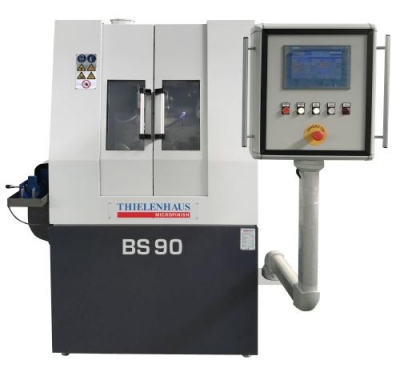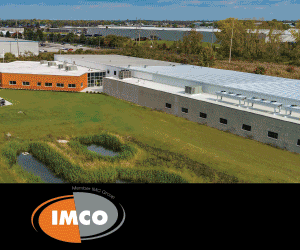Contact Details

A high-performance machine for the finest processing of inner and outer rings of one and two rowed ball bearings, roller bearings and wave-like special types has been developed by Thielenhaus Microfinish: The BearingStar 90, which has been designed both for quantity production as well as flexible production in small and medium scale production, is a further development of KM 90, a longstanding proven anti-friction bearing processing solution from the market-leading manufacturer. All of the new technologies from direct drive are available for the new oscillation unit through to double oscillation HyperFinish with overlapping high frequency oscillation and a small stroke. The complete tooling process of the previous model can also be used for the new machine.
Due to the extremely short auxiliary process time of 0.9 seconds, the BearingStar 90 is currently able to achieve the quickest roller bearings finish processing in the world. The floor to floor time can be a sensational 3.5 seconds under the conditions of a direct link with an upstream grinding machine, for example, a deep groove ball bearing of an outer and inner ring Type 625. Furthermore the changeover time between two good parts can be reduced to less than 20 minutes. The new fast runner for mass production can even be flexibly converted from radial to axial bearing rings and from ball bearing to roller bearing processing.
With the optionally available HyperFinish technology 2.0, up to 30% shorter cycle times can be achieved by overlapping the main oscillation with an additional high frequency oscillation. Thanks to the increased productivity, you will be able to do without additional machining stations and/or machines, resulting in operational cost savings. Due to the reduced oscillation angle, quality and shape parameters are also improved so that optimal dimensional accuracy can be achieved, particularly with 4 point bearing rings, for example.
The direct drive radial oscillation for ball bearing rings makes it possible to adjust the oscillation and approach angle, as well as oscillation frequency and stroke using the program. With the changeable direct drive for linear oscillation for roller bearing rings, the adjustment of the linear stroke can also be recorded in the program. This also applies for the X-Z track position.
The menu and image-driven programming with automatic program generation and calculation of the process parameter speed and stone grinding pressure from known indicators of cutting speed in m/min and specific grinding pressure in N/mm² makes for easier handling of the machine. Menu-driven set up is also optionally offered. An innovative compensation for wear on the workpiece driver makes it possible to use reground drivers and significantly reduces tooling costs.
Related Glossary Terms
- approach angle
approach angle
Angle between the insert’s side-cutting edge and the line perpendicular to the milling cutter’s axis of rotation. Approach angle, which is also known as cutting edge angle, is used with metric units of measurement. See lead angle.
- cutting speed
cutting speed
Tangential velocity on the surface of the tool or workpiece at the cutting interface. The formula for cutting speed (sfm) is tool diameter 5 0.26 5 spindle speed (rpm). The formula for feed per tooth (fpt) is table feed (ipm)/number of flutes/spindle speed (rpm). The formula for spindle speed (rpm) is cutting speed (sfm) 5 3.82/tool diameter. The formula for table feed (ipm) is feed per tooth (ftp) 5 number of tool flutes 5 spindle speed (rpm).
- grinding
grinding
Machining operation in which material is removed from the workpiece by a powered abrasive wheel, stone, belt, paste, sheet, compound, slurry, etc. Takes various forms: surface grinding (creates flat and/or squared surfaces); cylindrical grinding (for external cylindrical and tapered shapes, fillets, undercuts, etc.); centerless grinding; chamfering; thread and form grinding; tool and cutter grinding; offhand grinding; lapping and polishing (grinding with extremely fine grits to create ultrasmooth surfaces); honing; and disc grinding.
- grinding machine
grinding machine
Powers a grinding wheel or other abrasive tool for the purpose of removing metal and finishing workpieces to close tolerances. Provides smooth, square, parallel and accurate workpiece surfaces. When ultrasmooth surfaces and finishes on the order of microns are required, lapping and honing machines (precision grinders that run abrasives with extremely fine, uniform grits) are used. In its “finishing” role, the grinder is perhaps the most widely used machine tool. Various styles are available: bench and pedestal grinders for sharpening lathe bits and drills; surface grinders for producing square, parallel, smooth and accurate parts; cylindrical and centerless grinders; center-hole grinders; form grinders; facemill and endmill grinders; gear-cutting grinders; jig grinders; abrasive belt (backstand, swing-frame, belt-roll) grinders; tool and cutter grinders for sharpening and resharpening cutting tools; carbide grinders; hand-held die grinders; and abrasive cutoff saws.




